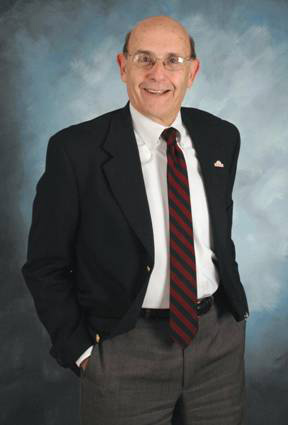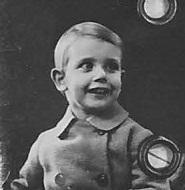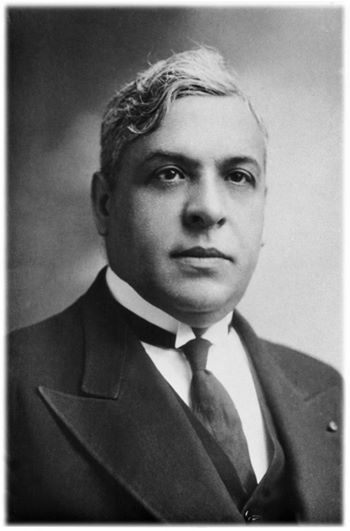By Donald H. Harrison


SAN DIEGO–The former Portuguese Consul in Bordeaux, Aristides de Sousa Mendes, is credited with rescuing 30,000 people from the Nazi terror by means of issuing them visas to live in neutral Portugal, even though he had no authorization to do so. After the Germans invaded France in 1940, he signed as many visas as he could before he was removed from office in disgrace by Portuguese dictator António de Oliveira Salazar . He died in relative obscurity, but later, as his deeds became known in the time of post-Holocaust reflection, he received many posthumous honors.
Lee Sterling, a retiree who lives in the San Diego suburb of Encinitas, was just about 4 years old when Sousa Mendes on a visit to Bayonne, France, issued visas to him and his family. Sterling at the time was too young to understand what was happening. It was only in 2012 when, as a matter of curiosity, after Googling his original family name, “Serebriany” and his grandmother’s family name “Asinsky” that he found his own name on a list of refugees who had been issued life-saving visas by Sousa Mendes.

Learning that he was a member of a large group of refugees who also included Margret and H.A. Rey–creators of the Curious George children’s stories about a mischievous monkey–Sterling was prompted to contact and then become active in the Sousa Mendes Foundation. Today, he serves as a lecturer in Southern California for the Foundation, which recently produced a movie, Disobedience: The Sousa Mendes Story, telling the story of how Sousa Mendes was motivated by the courage of an Orthodox rabbi, Chaim Kruger, to defy the Portuguese government’s directives and to save as many Jews and other French nationals as he could. Sterling shows the movie and lectures thereafter, with the fee paid for his appearances going to support the work of the Sousa Mendes Foundation. He may be contacted at jddu73@gmail.com
In a recent telephone interview, Sterling said he knew that his family had come to the United States from Belgium via France, Spain and Portugal, but the circumstances of their travels had never been discussed with him by his parents. He said he has interesting snatches of memory that, now that he has learned to story of Mendes Sousa, he can put into the context of his life and world events.

“I remember as a baby having a nanny and my mother having a cook, but that was not the kind of life we had in America,” Sterling said. “It was a struggle initially for my father.”
The Benelux countries–Belgium, Netherlands, and Luxembourg, were invaded by the Germans in May 1940. Then living in Brussels, Belgium, “I remember going to the window to look to see what all these big sounds were and my father pulling me away from the window,” Sterling said. “I remember pulling apart those long maroon drapes in the living room to see what was going on outside.”
He doesn’t remember what he saw out there, only “the drapes and my father pulling me away from the window.”
The family escaped to France, only slightly before that country fell to the Nazis in June 1940. “I remember one night on our travels, we were in a café and there were bombs bursting outside,” said Sterling. “One of my cousins and I were put under a tavern table and surrounded by other tables to protect us. I can remember being there with my cousin Monique and looking at the fireplace that was going. It was exciting.”
Working their way to the south of France, “I remember that we lived in a castle with some other refugee families,” Sterling said. “I don’t know how many days or weeks we were there, but it was several. I remember playing a game with my sister and some other kid and we were throwing rocks over the wall, and either I got hit or I hit my sister. I can’t remember which, but I remember the wall and throwing rocks.”
And does he remember a subsequent lecture from his parents?
“I don’t remember that–thank God. It would have been disastrous.”
One night, he said, “I remember looking up in the sky and seeing parachutists and our having to leave.”
The parachutists were the Germans. The Serebriany – Alinsky family made haste to Bayonne. There his father, Hersh Serebriany, wrote a letter which later came into Sterling’s possession because it had been saved by relatives.
“Unfortunately each day is another heartache,” Sterling quoted from the letter. “The news is disastrous. Any day now we expect the Germans at our front door. We decide to go towards and Spanish border … With three cars we arrived at Bayonne… With much ado and tragic moment, we finally receive our Spanish and Portuguese visas and on the road we go.”
Sterling explained that once Portugal granted a visa, Spain automatically issued a vista to transit its territory en route to Portugal.
The family made its way to the Figueira da Foz, a city on Portugal’s Atlanta coast. They arrived, by Sterling’s estimate, either at the end of June or the beginning of July, and stayed there until January 27, 1941, when they embarked on a ship for the United States.
In Figuera de Foz, “I remember walking in a park with my father and a friend of my father who had a daughter who fed me mushrooms, which resulted in me being taken to the hospital and having my stomach pumped. ”
On a more pleasant note, “I remember that we used to go to a movie theatre that was on top of a building.”
In 2013, Sterling and his wife retraced his family’s journey. “I had been interviewed on Portuguese TV and I also had been in a magazine, similar to Time magazine. An older lady saw us from across the street and she spoke only Portuguese, so she was talking to a journalist there who was translating for us, and I asked if she remembered the movie theatre on top of the building. She remembered and she pointed out where the building had been.”
An exciting moment came when he was approached by a Portuguese high school teacher who had visited the Yad Vashem Holocaust Memorial on a trip to Israel with other teachers. Hearing from the news reports that Sterling was in Figuera de Foz, she went to the library and made a copy of a photo that showed the home in which he and his family had lived. Then along with her father and a translator, she led them to the site. “Unfortunately the house was abandoned and kind of a wreck,” Sterling said. They could not go inside.
Since his fortunate experience on Google, Sterling has made a study of the Sousa Mendes.
“I think he was a very religious person, whose faith meant a lot to him, even though he had a mistress with whom he had a child” said Sterling. “I think he deeply felt the need to what is right, in what he felt was God’s eyes. ”
Meeting Rabbi Kruger was a turning point for Sousa Mendes. He admired the rabbi and his four daughters and offered the family visas to travel to Portugal. Instead of snapping them up, the rabbi declined, explaining that he could not abandon his people — his fellow Jews.
“And that triggered a moment of reflection, as a matter of fact Sousa Mendes took ill, and he came out of the discussion with the decision to issue as many visas as he could,” Sterling related.
Sterling noted that the movie Disobedience took some liberties with the story, for example having Rabbi Kruger eating dinner at the home of Sousa Mendes. This would not have been possible for an Orthodox rabbi as the Sousa Mendes family had no familiarity with kashrut.
Having recovered some of his family history, Sterling has made it a point to pass along what he knows. “I have become much more open with my family about our history and about my feelings,” he said. “I was much more closed than I am today.”
*
Harrison is editor of San Diego Jewish World. He may be contacted at donald.harrison@sdjewishworld.com